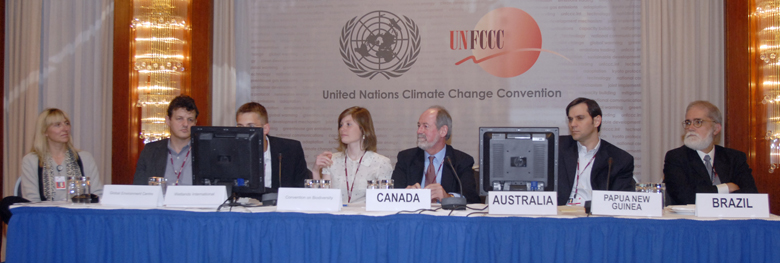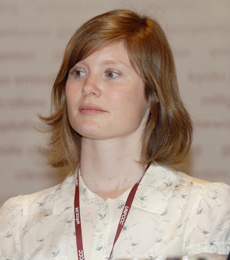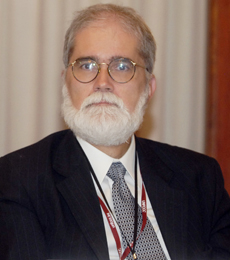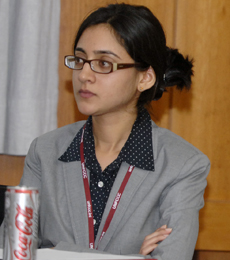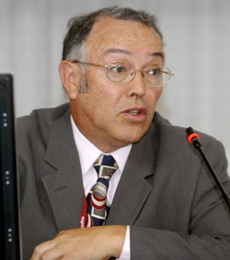 |
||
|
Published by the International Institute for Sustainable Development (IISD)
|
|||
|
A Special Report on Selected Side Events at the twenty-sixth sessions of the Subsidiary Bodies (SB 26) of the United Nations Framework Convention on Climate Change (UNFCCC)
|
|||||
| 7-18 May 2007 | Bonn, Germany | |||||
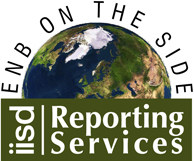 |
|||
 |
|||
Events convened on Saturday, 12 May 2007
|
Climate change and biodiversity: Linking implementation of the Convention on Biological Diversity to the UNFCCC Presented by the CBD Secretariat |
|||
|
Jamie Webbe, CBD Secretariat, summarized CBD activities that integrate climate change issues, including informal consultations on the links between the conservation and sustainable use of forest biodiversity and climate change, and cooperation between the two conventions. She noted the importance of identifying research and monitoring needs, and of developing indicators that are able to link climate change, biodiversity and the Millennium Development Goals (MDGs).
Pieter van Eijk, Wetlands International, noted the role of wetlands in climate change mitigation and adaptation, and stressed that threats to wetlands include land conversion and degradation, pollution, invasive species, and climate change. Noting that wetlands are enormous carbon sinks, storing 528,000 million tons of carbon, he said wetlands must be included in climate change mitigation and adaptation strategies. Laurence Pollier, UNFCCC Secretariat, reviewed the role of education and public awareness in climate change issues. She said such issues depend on each party’s technological and financial capacity, and encouraged cooperation, partnerships and networking among parties. Kevin Conrad, Papua New Guinea, noted positive incentives for Reducing Emissions from Deforestation and Degradation (REDD) in developing countries as the leading drivers of greater emission reductions, and underscored the opportunity to link REDD initiatives to MDGs and social benefits. Conrad stressed the challenge of capturing biodiversity benefits with UNFCCC instruments, and of linking them to livelihoods and sustainable financial resources, and suggested the CBD could develop a biodiversity offsetting mechanism. José Miguez, Government of Brazil, outlined the Brazilian experience on biofuels, noting that renewable sources represented 44.7% of the country’s energy matrix. He highlighted that Brazil aims to increase biofuels’ share in its energy matrix, and noted the benefits of sugar cane ethanol compared to corn ethanol. Miguez underscored the social and environmental benefits of biodiesel, and highlighted the introduction of biokerosene for aviation use by 2008. Faizal Parish, Global Environment Centre, discussed the nature and benefits of peatland issues, and suggested incorporating peatland issues in national mitigation and adaptation plans, and enhancing assessment of peatlands management and emissions. Robert Owen-Jones, Australia, presented key considerations for cooperation and collaboration between the CBD and the UNFCCC, noting the need for each country to encourage synergies among focal points. |
|||
|
|||
|
Capacity-building in Central America: progress with inventories, national systems and land-use change Presented by the United States |
|||
|
William Breed, US Agency for International Development (USAID), highlighted USAID’s work in Central America, which aims to increase regional capacity.
William Irving, US Environmental Protection Agency (USEPA) said the project sought to build sustainable national inventory systems and improve greenhouse gas (GHG) estimates, including through an effort to develop land-use maps to track carbon stock changes. Mausami Desai, USEPA, focused on the tools developed to help build national inventory management capacity, noting the templates were developed collaboratively and facilitated, e.g., transparency, prioritization of potential improvements, institutional knowledge, and accommodation of varying national capacity levels. Desai then discussed the types of templates, including on institutional arrangements, sources, and a national inventory improvement plan. Carlos Mansilla, Ministry of the Environment and Natural Resources, Guatemala, highlighted the value of the templates and Guatemala’s use of remote sensing data. He said the lessons learned included the need for: transparency; permanent experts on GHG inventories; and archiving. Ann Gordon, Belize, said that the project improved understanding of the GHG inventory process and facilitated the establishment of a network to facilitate future inventories. She highlighted that the lessons learned included the need to institutionalize the GHG inventory process and to improve data consistency. Mirza Castro, Ministry of Natural Resources and the Environment, Honduras, said that the project helped Honduras identify priorities for future action, including improved technology, additional resources, and capacity building. Stephen Ogle, Colorado State University, demonstrated the software tool Central American Agriculture and Land Use (CAALU), saying it: extends the design of IPCC worksheets; accommodates IPCC Tier-1 and Tier-2 Approaches; and serves as an archive. Noting that uncertainties are not currently estimated by the program, he said CAALU could be refined, including to be applied in other regions. Dominique Revet, UNFCCC Secretariat, discussed international capacity building initiatives for national GHG inventories, and emphasized the complementarity of the tools developed. Participants discussed the default values in CAALU, the value of CAALU and the templates for other countries, and the need for a CAALU user manual. |
|||
|
|||
|
||
|
Click the above button to go back to our ENB main coverage
|
||
|
|
|
|
|
||
|
